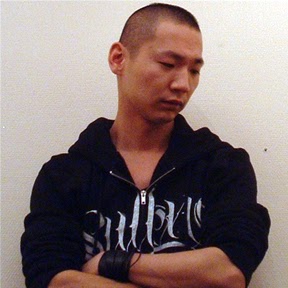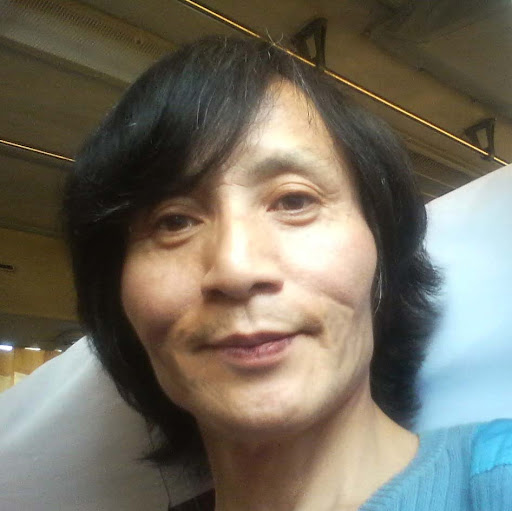Jung Sok Cho
age ~56
from San Marcos, CA
- Also known as:
-
- Jung S Cho
- Jung Sung Cho
- Jung Soon Cho
- Jung Moo Cho
- Jung H Cho
- Sok Cho Jung
- Jung Hee Chp
- Jong Cho
- Phone and address:
-
945 Tucana Dr, San Marcos, CA 92078
(760)8918282
Jung Cho Phones & Addresses
- 945 Tucana Dr, San Marcos, CA 92078 • (760)8918282
- Los Angeles, CA
- Fullerton, CA
- Santa Clara, CA
- Norcross, GA
- Murrieta, CA
- Vista, CA
- La Mirada, CA
- Sanger, CA
- Cumming, GA
Us Patents
-
Age Selection Switching Scheme For Data Traffic In A Crossbar Switch
view source -
US Patent:7274690, Sep 25, 2007
-
Filed:Nov 22, 2002
-
Appl. No.:10/302436
-
Inventors:Sung Soo Park - Cupertino CA, US
Sung Man Park - Cupertino CA, US
Jung Wook Cho - Sunnyvale CA, US
Edward Pak - Saratoga CA, US -
Assignee:Silicon Image, Inc. - Sunnyvale CA
-
International Classification:H04L 12/50
H04L 12/56
H04Q 11/00
G06F 13/00 -
US Classification:370388, 3703954, 370408, 370412, 370429, 710317
-
Abstract:A content addressable merged queue (camQ) architecture for high-speed switch fabrics reduces the memory requirement for crossbar switch input and output queues using memory cells and age tag comparators. CamQ emulates VOQ FIFO for each supporting priority, eliminating HOL blocking. Multiple QoS levels are supported cost effectively at higher traffic bandwidth limits. Content addressable memory (CAM) cells store payload destinations, which can be addressed by cell priorities. Once a priority for QoS is decided, all the cells with the selected priority in the payload can make connection requests to destination ports directly through the CAM structure. An age tag is assigned to incoming cells and fast age tag comparators provide FCFS features by selecting the oldest cell. Small memory sizes prevent the bottlenecking in ingress and egress queues. A CIOQ crossbar has a fast switching speed, emulating a FIFO output queue switch.
-
Content Addressable Merged Queue Architecture For Switching Data
view source -
US Patent:7352764, Apr 1, 2008
-
Filed:Jan 21, 2004
-
Appl. No.:10/762950
-
Inventors:Sung Soo Park - Cupertino CA, US
Sung Man Park - Kyungkido, KR
Jung Wook Cho - Sunnyvale CA, US -
Assignee:Silicon Image, Inc. - Sunnyvale CA
-
International Classification:H04L 12/28
-
US Classification:370412, 370389, 711108, 365 49
-
Abstract:A content addressable merged queue (camQ) architecture for switching data. The camQ architecture comprises a first array of priority cells for indicating a priority of a plurality of cells and a second array of destination cells for indicating a destination of the plurality of cells. A priority selector is operable to select a portion of said plurality of cells according to a priority selection. A grant generator is operable to grant at least one connection request associated with cells of the portion.
-
Hardware Automatic Performance State Transitions In System On Processor Sleep And Wake Events
view source -
US Patent:8271812, Sep 18, 2012
-
Filed:Apr 7, 2010
-
Appl. No.:12/756006
-
Inventors:Josh P. de Cesare - Campbell CA, US
Jung Wook Cho - Cupertino CA, US
Toshi Takayanagi - San Jose CA, US
Timothy J. Millet - Mountain View CA, US -
Assignee:Apple Inc. - Cupertino CA
-
International Classification:G06F 1/00
G06F 1/26
G06F 3/038
G06F 3/00
G09G 3/18
G11C 5/14
H04M 1/00 -
US Classification:713300, 713320, 713323, 713324, 345 52, 345211, 365227, 455574, 719321
-
Abstract:In an embodiment, a power management unit (PMU) may automatically transition (in hardware) the performance states of one or more performance domains in a system. The target performance states to which the performance domains are to transition may be programmable in the PMU by software, and software may signal the PMU that a processor in the system is to enter the sleep state. The PMU may control the transition of the performance domains to the target performance states, and may cause the processor to enter the sleep state. In an embodiment, the PMU may be programmable with a second set of target performance states to which the performance domains are to transition when the processor exits the sleep state. The PMU may control the transition of the performance domains to the second targeted performance states and cause the processor to exit the sleep state.
-
Hardware Automatic Performance State Transitions In System On Processor Sleep And Wake Events
view source -
US Patent:8443216, May 14, 2013
-
Filed:Aug 21, 2012
-
Appl. No.:13/590217
-
Inventors:Josh P. de Cesare - Campbell CA, US
Jung Wook Cho - Cupertino CA, US
Toshi Takayanagi - San Jose CA, US
Timothy J. Millet - Moutain View CA, US -
Assignee:Apple Inc. - Cupertino CA
-
International Classification:G06F 1/00
G06F 1/26
G06F 3/038
G06F 3/00
G09G 3/18
G11C 5/14
H04M 1/00 -
US Classification:713300, 713320, 713323, 713324, 345 52, 345211, 365227, 455574, 719321
-
Abstract:In an embodiment, a power management unit (PMU) may automatically transition (in hardware) the performance states of one or more performance domains in a system. The target performance states to which the performance domains are to transition may be programmable in the PMU by software, and software may signal the PMU that a processor in the system is to enter the sleep state. The PMU may control the transition of the performance domains to the target performance states, and may cause the processor to enter the sleep state. In an embodiment, the PMU may be programmable with a second set of target performance states to which the performance domains are to transition when the processor exits the sleep state. The PMU may control the transition of the performance domains to the second targeted performance states and cause the processor to exit the sleep state.
-
Image Sensor Data Formats And Memory Addressing Techniques For Image Signal Processing
view source -
US Patent:8508621, Aug 13, 2013
-
Filed:Sep 30, 2010
-
Appl. No.:12/895346
-
Inventors:Guy Côté - San Jose CA, US
Jeffrey E. Frederiksen - Sunnyvale CA, US
Joseph P. Bratt - San Jose CA, US
Jung Wook Cho - Cupertino CA, US -
Assignee:Apple Inc. - Cupertino CA
-
International Classification:H04N 5/76
-
US Classification:34823199, 3482221
-
Abstract:Certain embodiments of the present disclosure provide a flexible memory input/output controller that is configured to the storing and reading of multiple types of pixels and pixel memory formats. For instance, the memory I/O controller may support the storing and reading of raw image pixels at various bits of precision, such as 8-bit, 10-bit, 12-bit, 14-bit, and 16-bit. Pixel formats that are unaligned with memory bytes (e. g. , not being a multiple of 8-bits) may be stored in a packed manner. The memory I/O controller may also support various formats of RGB pixel sets and YCC pixel sets.
-
Controller Core Time Base Synchronization
view source -
US Patent:20130042135, Feb 14, 2013
-
Filed:Aug 12, 2011
-
Appl. No.:13/208669
-
Inventors:Herbert Lopez-Aguado - Sunnyvale CA, US
Jung Wook Cho - Cupertino CA, US
Conrad H. Ziesler - Seattle WA, US -
International Classification:G06F 1/12
-
US Classification:713400
-
Abstract:A system and method for efficiently synchronizing multiple processing cores on a system-on-a-chip (SOC). A SOC includes an interrupt controller and multiple processing cores. The interrupt controller includes a main time base counter. The SOC includes multiple local time base counters, each coupled to a respective one of the processing cores. Synchronization logic blocks are used to update the local counters. These blocks receive a subset of bits from the interrupt controller. The subset of bits represents a number of least significant bits of the main counter less than a total number of bits for the main counter. The logic blocks update an associated local counter according to changes to the received subset of bits. A difference may exist between values of the main counter in the interrupt controller and the local counter in the processing core. However, this difference may be a constant value.
-
Hardware Controlled Pll Switching
view source -
US Patent:20130043917, Feb 21, 2013
-
Filed:Aug 16, 2011
-
Appl. No.:13/211004
-
Inventors:Josh P. de Cesare - Campbell CA, US
Jung Wook Cho - Cupertino CA, US
Toshinari Takayanagi - San Jose CA, US -
International Classification:H03L 7/07
-
US Classification:327150
-
Abstract:A system and method for efficiently managing multiple PLLs on a system on a chip (SOC). A SOC includes a hardware phase lock loop (PLL) switching control block coupled to a software interface. The hardware PLL switching (HPS) control block receives PLL switch requests from software. The request identifies a given core clock received by a given processing core of multiple processor cores on the SOC and indicates the identified core clock is not to be provided anymore by a current PLL. The request indicates a given search method including search conditions. The HPS control block searches for a target PLL that satisfies these search conditions. In response to finding the target PLL, the HPS control block changes clock network connections and parameters across the die of the SOC. These changes across the die disconnect the identified core clock from the current PLL and connects the identified core clock to the target PLL.
-
Threshold-Based Temperature-Dependent Power/Thermal Management With Temperature Sensor Calibration
view source -
US Patent:20130076381, Mar 28, 2013
-
Filed:Sep 26, 2011
-
Appl. No.:13/245229
-
Inventors:Toshinari Takayanagi - San Jose CA, US
Jung Wook Cho - Cupertino CA, US -
International Classification:G01R 31/00
G01K 15/00 -
US Classification:32475003, 374 1, 374E15001
-
Abstract:A method and apparatus for temperature sensor calibration is disclosed. In one embodiment, an integrated circuit (IC) is tested at a first known temperature corresponding to a first temperature threshold. During the test, a first temperature reading is obtained from a temperature sensor. A first offset is calculated by determining the difference between the first known temperature and the first temperature reading. The first offset is recorded in a storage unit for later use during operation of the IC. During operation, the first offset may be added to temperature readings obtained from a temperature sensing unit to produce an adjusted temperature value. The adjusted temperature value may be compared to one or more temperature thresholds. Based on the comparisons, a power management unit may perform power control actions.
Lawyers & Attorneys
Name / Title
Company / Classification
Phones & Addresses
Owner
Ted's Burgers
Eating Place
Eating Place
125 E Taft Ave, Orange, CA 92865
President
Wpcr Inc
Nonclassifiable Establishments
Nonclassifiable Establishments
909 Rose Arbor Dr, San Marcos, CA 92078
President
Hycar, Inc
3435 Wilshire Blvd, Los Angeles, CA 90010
President
Kyung Ki USA Inc
Management Consulting Services
Management Consulting Services
1151 N Euclid St, Anaheim, CA 92801
Owner
Songs Gift Shop
Ret Gifts/Novelties · Gift Shops
Ret Gifts/Novelties · Gift Shops
603 S New Hampshire Ave, Los Angeles, CA 90005
(213)3519999
(213)3519999
President
BUEMO INC
909 Rose Arbor Dr, San Marcos, CA 92078
President
Cho Kna Corp
Eating Place · Grocery Stores
Eating Place · Grocery Stores
790 N Archibald Ave, Ontario, CA 91764
(909)9446701
(909)9446701
President
HUNTERS' HIDEAWAY, INC
Nonclassifiable Establishments · Real Estate Agent/Manager
Nonclassifiable Establishments · Real Estate Agent/Manager
9595 Wilshire Blvd STE 1010, Beverly Hills, CA 90212
License Records
Jung Eun Cho
License #:
RN53329 - Active
Category:
Nursing
Issued Date:
Jun 27, 2014
Expiration Date:
Mar 1, 2018
Type:
Registered Nurse

Jung Hyun Cho
view source
Jung Hyun Cho
view source
Jung Hwan Cho
view source
Jung Whan Cho
view source
Jung Hyun Cho
view source
Hyun Jung Cho
view source
You Jung Cho
view source
Hee Jung Cho
view sourceGoogleplus

Jung Cho

Jung Cho

Jung Cho

Jung Cho

Jung Cho

Jung Cho
Myspace
News

‘Fallout,’ Michael Douglas Starrer ‘Franklin’ and ‘Becoming Karl Lagerfeld’: Canneseries Unveils Fashionably Eclectic Lineup
view source- This Korean horror drama, created by DJ Lee, tells seven spooky stories all revolving around mysterious tarot cards, cursing everyone who comes in their possession. Features Parasite star Yeo-Jung Cho, Eun-Sol Jo and Seung-Hoon Kim. Directed by Byung-Gil Choi, who already collaborated with Yeo-J
- Date: Mar 12, 2024
- Category: Entertainment
- Source: Google
Classmates

Jung Hee Cho
view sourceSchools:
Georgetown Preparatory School Rockville MD 1990-1994
Community:
James Hamm, Charles Maze

Jung Cho
view sourceSchools:
Waters Elementary School Chicago IL 1986-1989
Community:
Morton Miller, Dolores Wyman, Sorrelle Schuster

Yoon-Jung Cho | Universit...
view source
Sue Jung Cho, Fairfax Hig...
view source
Lindbergh Elementary Scho...
view sourceGraduates:
Nicholas Casbar (1970-1974),
Cathy Raab (1958-1960),
Min Jung Cho (1983-1984),
Michele Alpher (1983-1991)
Cathy Raab (1958-1960),
Min Jung Cho (1983-1984),
Michele Alpher (1983-1991)

Stephen Foster School, Al...
view sourceGraduates:
Jung Cho (1977-1981),
Michael Smith (1970-1972),
Rich Phillips (1980-1984),
Lisa Jones (1976-1976),
Howard Conard (1970-1972)
Michael Smith (1970-1972),
Rich Phillips (1980-1984),
Lisa Jones (1976-1976),
Howard Conard (1970-1972)

Royal Vale High School, M...
view sourceGraduates:
Woon Jung Cho (1980-1982),
Gordon Hum (1977-1978),
Amy Karen Marks (1977-1978),
Nola Etkin (1978-1978),
Samantha Brenhouse (1995-1998)
Gordon Hum (1977-1978),
Amy Karen Marks (1977-1978),
Nola Etkin (1978-1978),
Samantha Brenhouse (1995-1998)

McGill University - Manag...
view sourceGraduates:
Michel Cardinal (1982-1984),
Woon Jung Cho (1987-1990),
Gaetano Fiore (1980-1984),
Stanley Diamond (1950-1954)
Woon Jung Cho (1987-1990),
Gaetano Fiore (1980-1984),
Stanley Diamond (1950-1954)
Youtube
Get Report for Jung Sok Cho from San Marcos, CA, age ~56





![Choose your favorite Cho Jung-seok [ENG SUB] Choose your favorite Cho Jung-seok [ENG SUB]](https://i.ytimg.com/vi/qEaSAfZwlcM/hq720.jpg?sqp=-oaymwEcCNAFEJQDSFXyq4qpAw4IARUAAIhCGAFwAcABBg==&rs=AOn4CLACeG_8IrED9f2oftBcQYziKNZyfg)